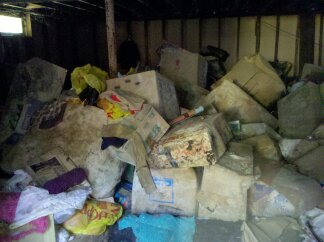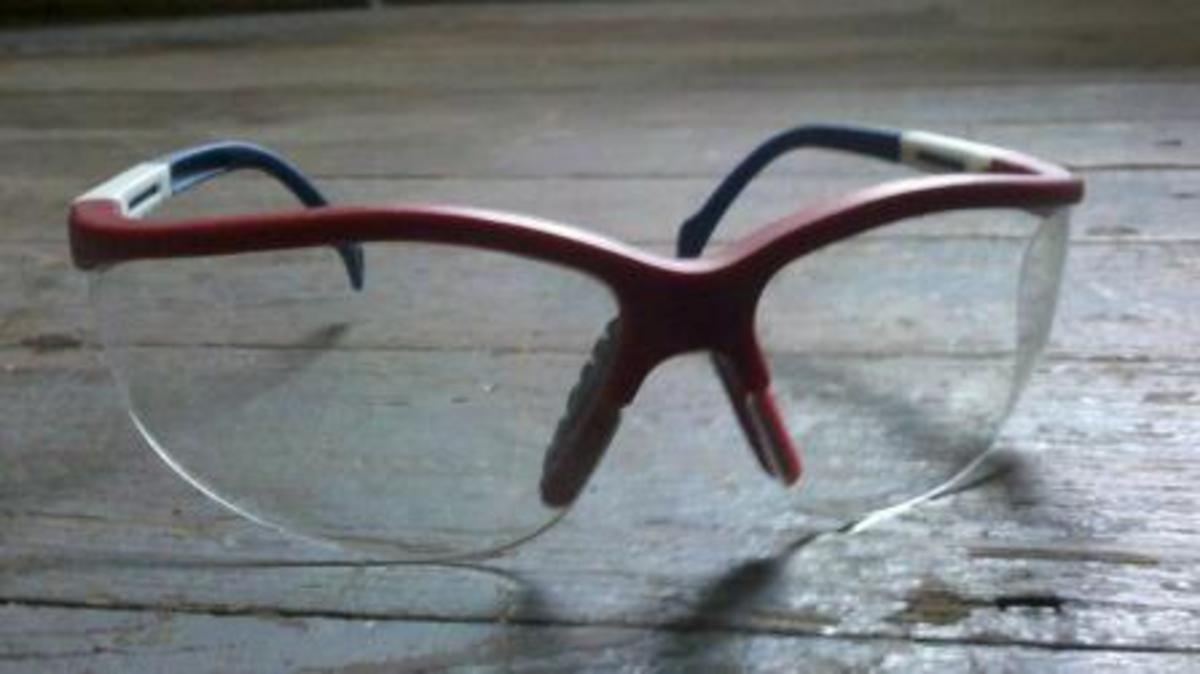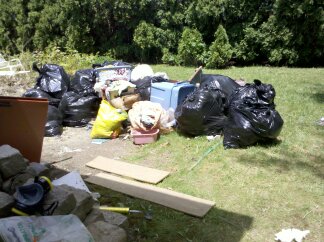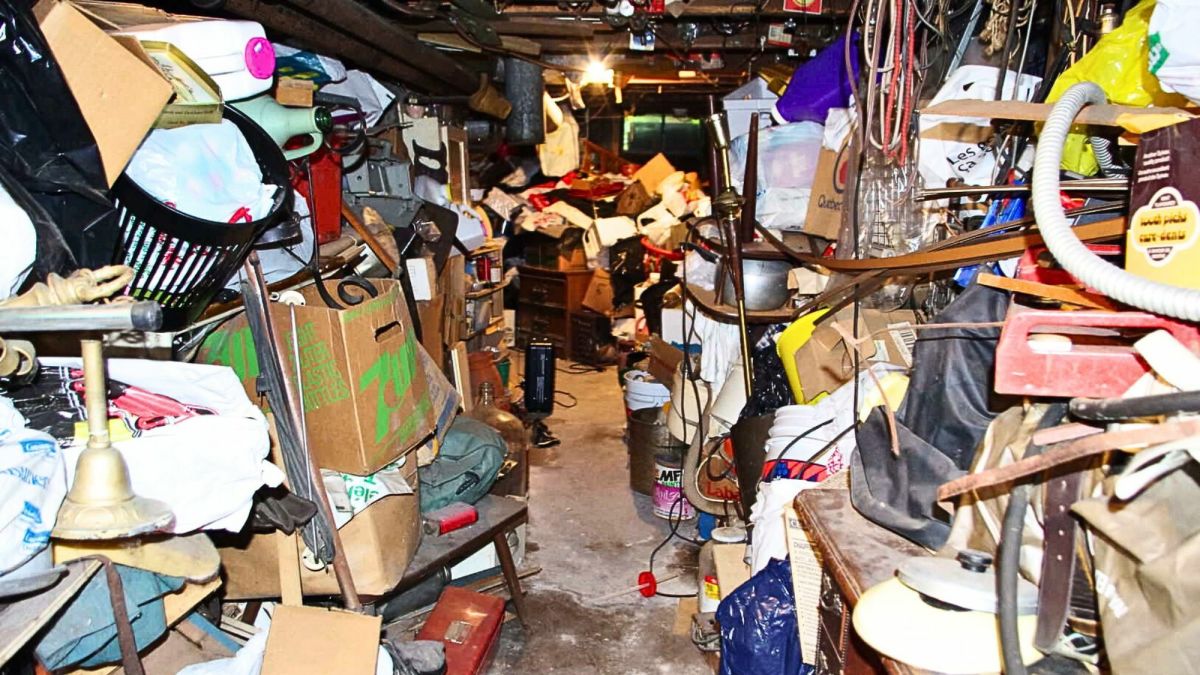- HubPages»
- Home and Garden»
- Cleaning»
- Organizing & Decluttering
Compulsive Hoarding: Many Families Lose Loved Ones to House Trash
Someone I Know...

Sad But True
I was recently asked by one of my friends to help him clean out his mother's entire house. She has been Hoarding for over 30 years. After the death of her husband (1984?) she stopped throwing things out and constantly bought everything that was on sale.
The picture above was taken after I cleared enough room to get the basement cellar door open.
To make matters worse, there has been a steady leak of water in the basement so everything is moldy. Needless to say, I have to wear a respirator just to go down there.
Hoarding
Are You A Hoarder?
The Hoarding Epidemic
Hoarding in America is becoming an increasingly dangerous trend. Many people are forced out of their homes because they are deemed unsuitable for human living conditions.
Compulsive Hoarding is also called Pathological Hoarding and results when someone has a psychological need to acquire and store things, even if it's unhealthy or unsafe. There are different kinds of hoarding, but basically, people are considered hoarders when they have so much stuff in their home that it is nearly impossible to get around.
Many Hoarders are aware of their situation but are reluctant to change it. Often times a psychological breakdown occurs when people aiding the effort begin to throw the hoarder's stuff out.
Although Compulsive Hoarding is not new, it has gained recent exposure nationally due to television shows that present the condition in real life on their shows. Some of these shows include A&E's Hoarders and TLC 's Hoarding: Buried Alive.
There are a lot of people suffering from this disorder. There is no way to count the actual amount of cases of Compulsive Hoarding there are because most hoarders keep to themselves. They become very lonely and often are widows and mothers who have seen their children grow up and move away. There is a psychological element to it where there is a deep desire to be private but not alone. They accumulate things to try to fill an empty void that they feel.
In some cases, intense psychotherapy can help a person with this behavior problem. The key factor in changing the behavior is the attitude and desire towards changing that behavior and accepting therapy and change. Some people will never overcome this disease. We read in the headlines about dead animals found in the house and unfortunately, many of these people succumb to their own mess. If that's not bad enough, when the person dies the family is usually help responsible for cleaning up or else the house could become condemned and property taxes accrue while the house just decays.
The point is, there are a lot of Hoarders out there and family members need to step up and try to get them help. It may not always work, but it is worth trying.

Is Someone In Your Family A Hoarder?
How to Help a Hoarder
Ultimately, it is the person afflicted with this diseases' grasp that has to make the decision to clean up the mess. This is not an easy task and the person will need positive support from family and friends during this time of transition.
Often times family members of compulsive hoarders get a negative attitude towards the hoarder and this only adds to the psychological part of the disease. To be an effective supporter, one must understand that there is a lot more to this behavior than simply being lazy or careless. There is a desire to hoard that stems from the brain and the person can not help themselves.
The best thing a family can do when planning a major cleanup is to prepare themselves for the entire process. There is more involved than just going into the house and start throwing everything out. Remember, the hoarder has a personal attachment to every single item that they hoard. Be prepared for emotional breakdowns and a lack of desire to follow through with the project by the hoarder. After a few hours they may get very distressed and withdrawn.
It is highly recommended that the person who suffers from compulsive hoarding disorder seek psychological counseling while dealing with this issue. Often times the reason for hoarding is something deep within themselves and this needs to be recognized and dealt with by a professional.

Starting the Big Cleanup Project: Things to Consider
Here are some things you should consider while approaching the hoarder and the cleaning process:
- Be kind, patient and understanding. A supportive attitude towards the person will go a lot father than a poor attitude.
- Have a meeting with all those involved and whenever possible, have the counselor on site at the beginning of the clean up.
- Be prepared for set backs and let downs. This is a normal part of the problem and constant encouragement will help motivate the hoarder.
- Use caution when cleaning. Many of these hoarding sites contain unsafe conditions including animal feces and carcasses, mold and mildew, rats and mice which carry diseases and a variety of environmental toxins.
- Use gloves and Personal Protection Equipment (PPE) such as eye protection, breathing respirators and any other equipment as needed.
- Never work in an environment that you don't feel safe in! If floorboards or stairs are rotted or in disrepair, consult a carpenter or engineer to see what can be done to improve the safety of the site.
- Rent a large dumpster. Multiple dumpsters may be needed for large projects.
- Take pictures and video of before, during and after. These photos will document the progress and can be used to reassure the hoarder in their times of regret.

After the Cleanup: What Happens Next?
The cleaning of a Hoarder's property may take several days to several weeks to complete. Remember, this hoarding behavior has been in effect for years so don't plan on getting everything done in a few hours!
After the cleanup is finished, make sure that the person effected by hoarding continues to see a therapist. Studies have shown that people who do not continue in treatment tend to go back to their hoarding behaviors in very short period of time.
Many times after everything is cleaned up, the hoarder can feel lonely and depressed. You may want to invite them out of their environment several times a week. That way when they return home, they can experience what it is like to walk into a healthy clean environment that is their own.
Family members should make frequent visits to the site and continue support for the person affected. If the person starts showing signs of going back to old behaviors, show them pictures of the mess at the beginning and the clean results at the end. Sometimes they need to be reminded of how bad things really were before they cleaned everything up.
Never give up on the people you love! Celebrate this milestone and show them how much you really care for them. Remind them that you care so much for them and that is why you helped them to clean up!









